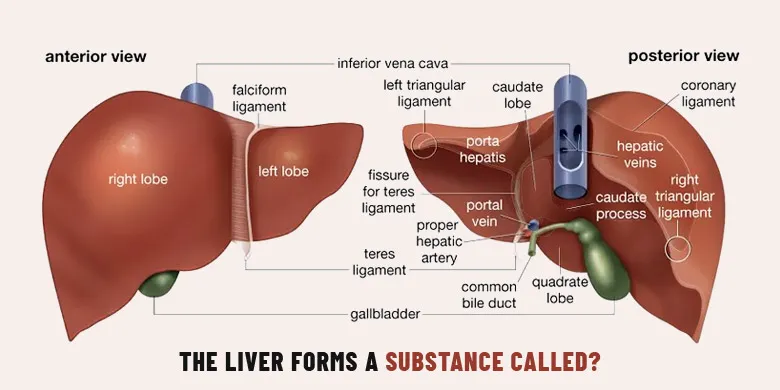The Liver Forms a Substance Called?
Once shrouded by mystery, different functions of the largest internal organ of the body, the liver, have been making headlines for the previous some decades. You might know about the role of the liver as functioning in the capacity of both an endocrine and an exocrine gland. Its working and classification as a lymphoid organ might be something new to many. But the latest research argues in support of this opinion.
Do you know the liver forms a substance called …? While it produces several different types of substances, the question refers to a product that most people want to know. You’ll definitely get the answer. But, before proceeding to that question, let’s elaborate on the role of the liver as a natural manufacturing plant.
Various products synthesized by the liver to assist the functioning of different organ systems suggest that it is one of the most amazing organs of the body. This dynamic organ is of vital importance in several physiological processes. Did you know the liver is responsible for as many as 500 different functions that are executed in combination with other organs and organ systems?
The Liver Forms a Substance Called …
There could be different answers to the question, “The liver forms a substance called …?” It all depends on your approach to the role of this organ in the body, such as an endocrine gland, an exocrine gland, and a component of the lymphatic system – a lymphoid organ.

As an Endocrine Gland:
: Though it is not its primary function, the liver does act as a large endocrine gland. In this capacity, the liver forms a substance called angiotensinogen. It is a hormone that acts as a precursor for angiotensin. The angiotensin is also a hormone – a peptide hormone – that causes an increase in blood pressure through vasoconstriction. Other hormones produced by the liver include thrombopoietin, hepcidin, and Insulin-like Growth Factor-1.
As an Exocrine Gland:
As an exocrine gland, the liver forms a substance called the bile or gall. Released into the duodenum – the first part of the small intestine – the bile juice assists in the digestion of lipids in the small intestine. It signifies the role of the hepatic organ in the digestive system.
As a Lymphatic Organ:
The discovery of the function of the liver as a lymphoid organ is a recent development in biological sciences. Classically, only those organs were regarded as lymphoid organs which exclusively had immunological functions. Based on the latest findings, the liver is believed to have unique immunological properties. For this purpose, the liver has large numbers of phagocytic cells, lymphocytes, and the antigen-presenting cells or APCs. It is also the site for the synthesis of cytokines, acute-phase proteins, and complement components.


